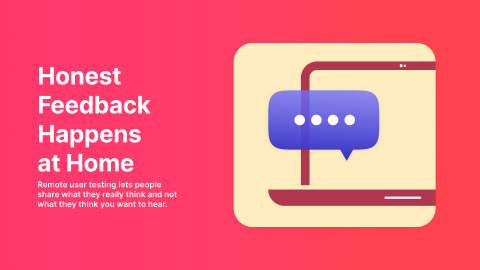Let’s say someone tries to enter their name as just a single letter. Or they upload a profile image that’s way too large. Or they tap “Submit” before filling out the form. In theory, these are outliers. In practice? They happen all the time. These are edge cases, the unusual, extreme, or just unexpected ways people use your product. They’re not bugs. They’re people behaving like people. And they’re one of the best stress tests for how resilient your UX really is.
The good news? You don’t need to over-engineer your design to support every possible oddity. But you do need to recognize where edge cases show up, how they impact real users, and how testing can help you catch them before things go sideways.
What Counts as an Edge Case in UX Design?
An edge case is any scenario that falls outside your standard user journey, the one we love to optimize for. These can be:
- Technical: Slow connection, unsupported browser, no cookies allowed
- Behavioral: Users skipping steps, entering data in odd formats, hovering forever but never clicking
- Content-based: Names with non-Latin characters, huge chunks of text, no profile photo, wrong or unexpected file formats etc.
Edge cases remind us that real users don’t always behave the way we imagined when interacting with our designs. They come with edge devices, messy data, and habits shaped by a hundred other products they’ve used before yours.
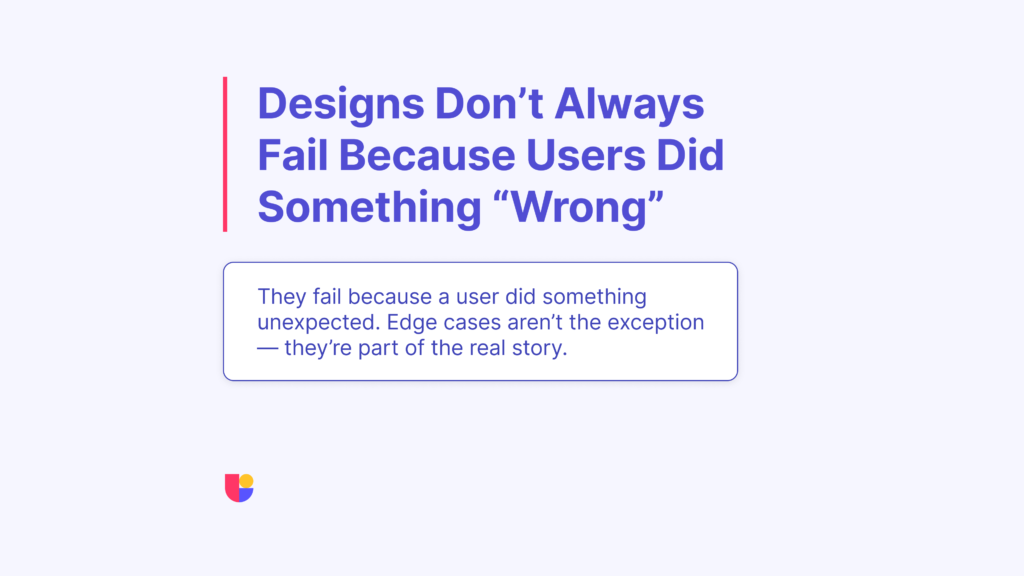
Why Ignoring Edge Cases Can Cost You
You know the kind of bug that only pops up during a live demo? That’s an edge case in the wild. When we don’t design for edge cases, we risk more than just bad UX:
- Loss of trust: If one small issue breaks the experience, users may not give you a second chance.
- Wasted support time: Your team ends up fielding tickets for things that could’ve been fixed earlier.
- Exclusion: Edge cases often impact users from diverse backgrounds or with unique needs. Ignoring them equals bias by default.
- Brand damage: Even a small failure, like a broken error message, can make your product feel unrefined or amateurish.
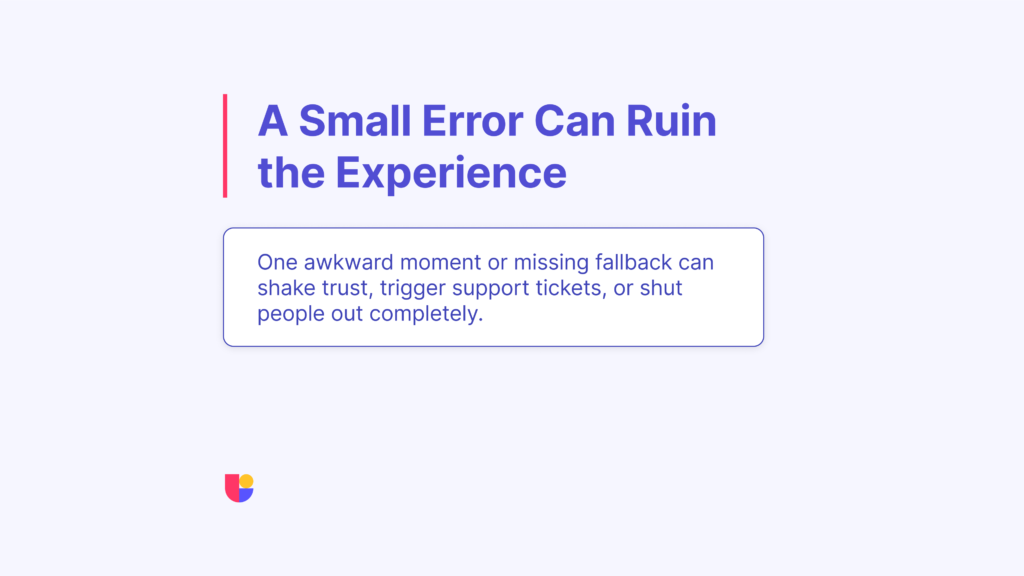
Designing with Edge Cases in Mind (Without Overcomplicating Everything)
You’re not trying to future-proof your design forever. But you can make it more resilient with a few mindset shifts:
- Expect weird input: Build forms that handle surprises such as long text, empty fields, or strange characters.
- Design graceful fallbacks: What happens if the data is missing? If the image fails to load? If a user takes a “wrong” turn?
- Communicate clearly: Error messages and instructions should guide users, not blame them or state the obvious. (Yes, I see that the browser is shaking when I press submit, but why isn’t the submission going through?)
- Prioritize what’s most likely to break: If you’re not sure what those areas are, test for them. Problem steps like login flows, form fields, and media uploads are often where edge cases hide.
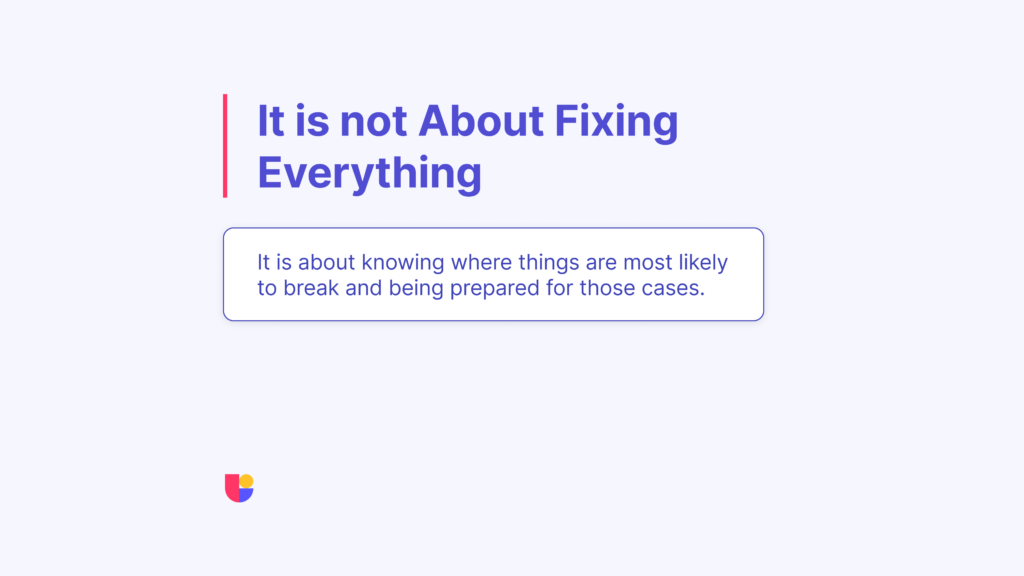
Testing with Some Flexibility: Using Task-Based Tools to Spot Unexpected Behaviors
Useberry shines when it comes task based usability testing. But that doesn’t mean you can’t find some edge cases during your UX testing with Useberry as well. With Open Analytics, you can give participants a bit more freedom within your tasks.
Even if the test starts with a clear goal, how people choose to get there reveals a lot. Open Analytics lets users explore your prototype naturally and complete tasks in their own way. That freedom helps you spot:
- Users skipping past critical screens
- Unexpected dead ends
- Hesitations, loops, or rage-clicking
- Alternate flows you hadn’t planned for
It’s not about watching users fail. It’s about watching what they do when things aren’t perfectly polished. Pair that freedom with follow-up usability tests, and you’ll have a clearer path toward better UX.
Another angle to consider: edge cases often pop up in areas you can anticipate. That’s where Single Task testing comes in. You can build a UX study around a known friction point, like uploading a file or filling out a profile form, and watch how users interact with that moment. Even with a defined task, unexpected user behavior can reveal design oversights and edge case vulnerabilities.
As Harry told me earlier:
“Your goal isn’t to find and fix every weird edge case, it’s to understand where your UX is weakest when users stray from the expected path.”
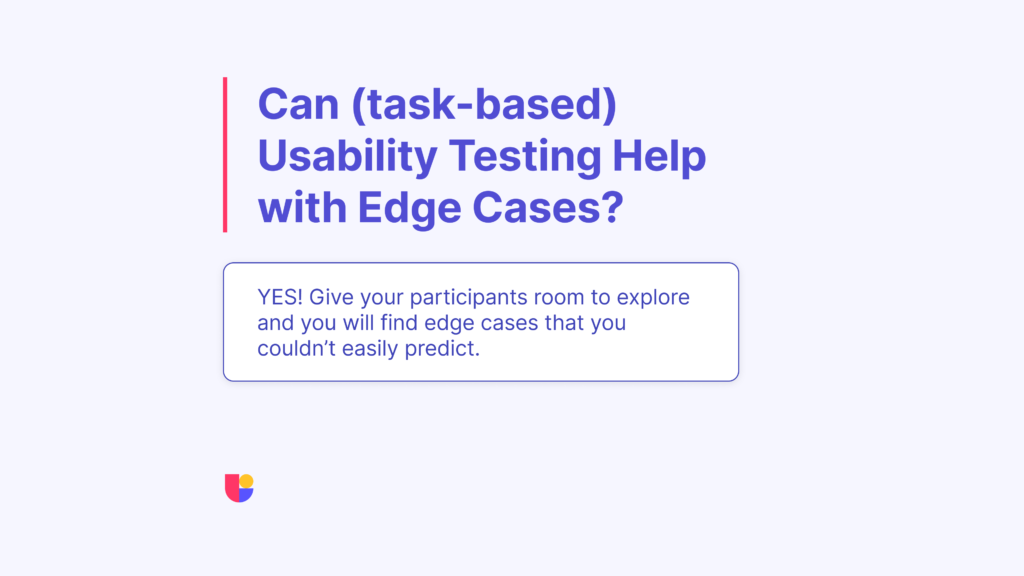
Spotting the Unexpected Takes Time (and Teamwork)
A simple usability test with five participants is often enough to catch the most common usability issues. But edge cases, I would be lying to you if I said they are easy to catch with that setup. They tend to show up after more users, more time, and more variation in behavior. And even then, you still won’t catch everything. That’s why it helps to collaborate with PMs, QAs, and anyone else who’s worked on large-scale product releases. These teammates know where the weird stuff happens.
Useberry’s collaborative features can make this kind of cross-functional feedback easier. You can share your results with a unique link, or invite colleagues to have a seat comment directly on your study. Whether they are flagging a bug, calling out an edge case, or suggesting a follow-up test, you will be gaining actionable next steps.
Want to see how Useberry can help with your designs?
Explore our UX Research platform and testing features at useberry.com.




